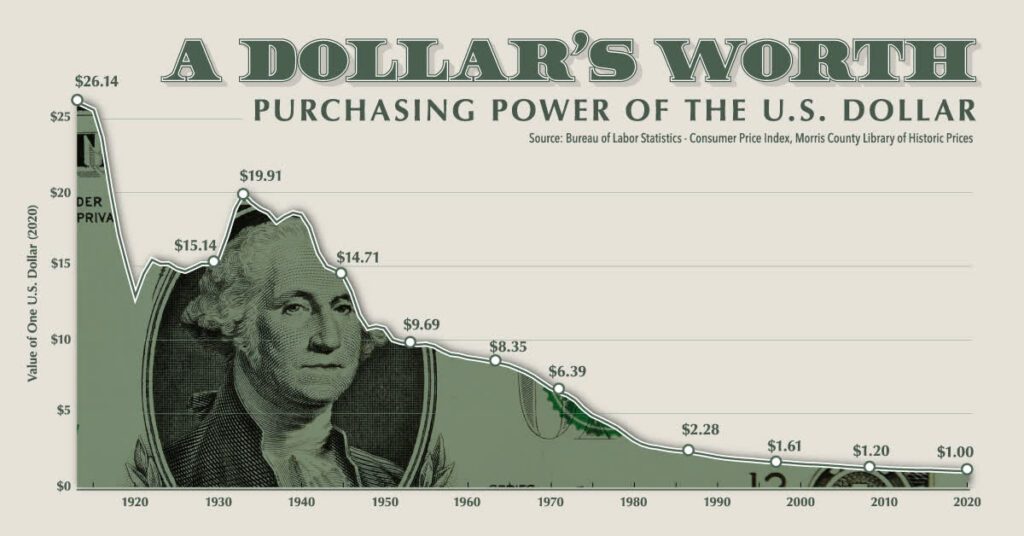Will The U.S. Dollar Collapse?
DOLLAR COLLAPSE?
It seems as if the U.S. dollar is under constant attack. Calls for its imminent collapse are heard daily. Fears of worsening inflation, expectations for hyperinflation, a weaker dollar, and political machinations of the BRIC countries populate the headlines.
Some investors are even more vocal and sound at times like cheerleaders, taunting others who may not be as raucous in expressing their contempt.
For not just a few people, the prediction and expectation of “a collapse in the U.S. dollar” is accepted as a foregone conclusion.
There is no room for alternative scenarios or conflicting possibilities in the minds of those who live and plan their lives based on the inevitable event.

WHAT IS MEANT BY ‘COLLAPSE’?
There are several different meanings (medical, structural, etc.) depending on the specific situation referenced, but for our purposes here is the one that matters…
collapse: to suddenly lose force, significance, effectiveness, or worth (“fears that the currency may collapse”) …Merriam Webster Dictionary
Being more elaborate we might say that a collapse in the dollar (a currency) would involve a dramatic loss of purchasing power in a very short period of time, maybe only a few months. This could eventually lead to unwillingness to accept dollars in trade or exchange.
In a situation as that described above, the price of any particular good or service becomes meaningless; and the money itself becomes worthless.
worthless: having no usefulness …Merriam Webster Dictionary
SOME HISTORICAL PERSPECTIVE
Could the U.S. dollar suddenly become worthless? Yes, it could. Before jumping to conclusions, though, we need to consider some historical perspective.
Between 1913 and 1980, the U.S. dollar lost ninety-seven percent of its purchasing power. That means that what you could buy with a dollar in 1980 was the equivalent of what 3 cents would have purchased six decades earlier.
Using 1913 (origin of the Federal Reserve; ratification of 16th Amendment – Federal Income Tax) as the reference point, it took sixty-seven years for the U.S. dollar to lose nearly all of its purchasing power.
But, the nearly complete loss in purchasing power (as horrible as it is) which occurred over those years does not qualify as a collapse. Below is the same definition from above with one slight modification…
collapse: to ‘suddenly’ lose force, significance, effectiveness, or worth (“fears that the currency may collapse”) …Merriam Webster Dictionary
The key to the meaning and intent of the term ‘collapse’ is embodied in the use of the word suddenly. To “suddenly lose force, significance, effectiveness, or worth” is more descriptive of a catastrophic single event than a longer term process.
The element of time becomes more important than the total destruction involved. For example, if the prices of consumer goods and services doubled over the next six months, the meaning and intent of the term collapse would be satisfied.
A doubling of prices for goods and services, though, represents a fifty percent loss in purchasing power compared to the ninety-seven percent loss referred to earlier in this article. However, the resulting financial and economic damage, because it occurs over such a short time span, would be worse than almost anything imaginable.
POSSIBILITIES AND LIKELIHOOD
The dollar has lost nearly all of its original purchasing power dating back to 1913. Most (ninety-seven percent) of that loss came between 1913-1980. The additional loss since 1980 brings the total to ninety-nine percent.
That additional two percent is the equivalent of a sixty-seven percent loss in purchasing power just since 1980. As radical as that sounds, it is not indicative of a collapse.
With all of the rumors, undercurrents, and latest flirtation with higher CPI rates, it doesn’t mean a U.S. dollar collapse is any more likely now than it was in 1980.
A collapse in the U.S. dollar at this point is highly predicated on unknown factors. The effects of inflation are unpredictable.
Overtime, those effects become more volatile. That volatility could lead to a credit collapse in the truest sense. A credit collapse would likely be accompanied by wide-scale drops in all asset prices, deflation, and economic depression; but not a collapse in the U.S. dollar. In fact, the dollar would gain purchasing power under those conditions.
Also, the occurrence of a “black swan event” is not inevitable. In any event, it doesn’t mean the U.S. dollar would become worthless overnight.
While it is reasonable, maybe even likely, that the U.S. government and Federal Reserve provide aggressive response similar to 2008-10 and in 2020-21 when the threat of credit collapse and economic devastation are upon us, the Fed’s efforts might not be enough to turn the tide.
by Kelsey Williams for Neptune Global
*********















